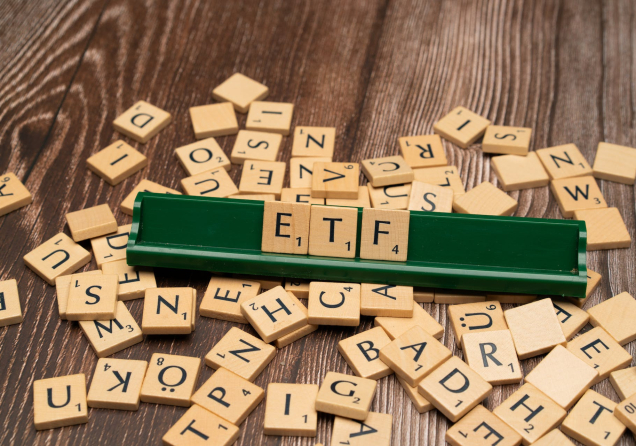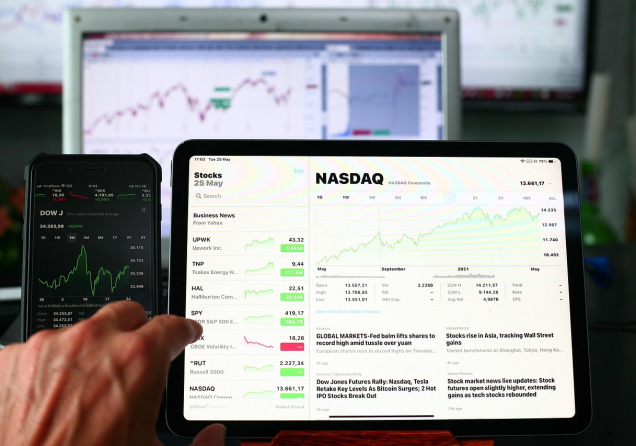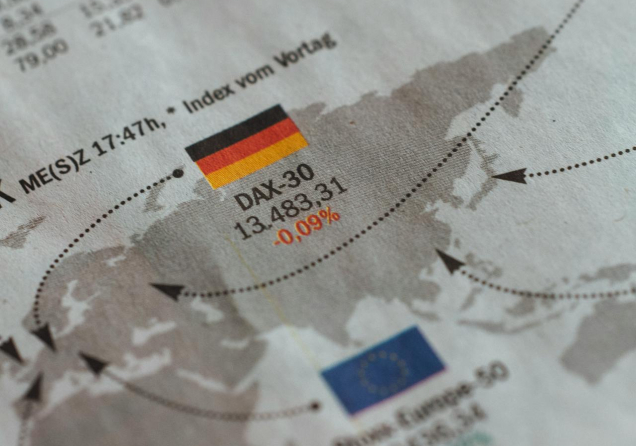Best ETFs for Day Trading
Day trading ETFs isn’t just about picking random tickers and hoping for the best. It’s about finding the right mix of liquidity, volatility, and tight spreads, the stuff that separates consistent traders from everyone else. Today, the ETF market has exploded to over $9 trillion in assets. But here’s the truth: only a handful of funds offer the volume, speed, and sharp price moves that day traders need.
If you’re trading ETFs like regular stocks, you’re probably leaving money on the table. Let’s change that. In this article, we’ll explore the key factors to consider when day trading ETFs and, more importantly, highlight some of the top ETFs with strong potential for day trading.
| Disclaimer: The information provided in this article is for educational and informational purposes only and does not constitute financial or investment advice. Trading indices involves risk, and you should consult a qualified financial advisor before making any investment decisions. |
Key Factors to Consider When Day Trading ETFs
Liquidity: The first rule of day trading ETFs: go where the action is. You want funds that have huge daily volume so you can get in and out without getting stuck. The best high-volume ETFs for day trading like SPY, QQQ, and IWM trade millions of shares every single day.
Volatility: No volatility, no opportunity. Simple as that. You want ETFs that actually move during the day, the ones where prices swing enough for you to catch real trades. The most volatile ETFs for quick profits are names like TQQQ, SOXL, and UVXY. They’ll give you plenty of chances to catch breakouts, reversals, or momentum runs.
Low Expense Ratios: If you’re day trading, you can’t afford to ignore fees. They matter way more than most people think. That’s why you want low-cost ETFs for active traders. SPY, QQQ, and a bunch of Vanguard ETFs have super low expense ratios, meaning more of your money stays in your pocket where it belongs.
Tight Bid-Ask Spreads: This one’s huge. If the spread between the bid and ask is wide, you’re already starting every trade at a loss. No thanks. You want ETFs with tight spreads for day trading, ideally a penny or two. SPY and QQQ nail these perfectly clean fills, no funny business. Tight spreads mean less slippage and better trade execution, especially when you're moving fast.
Asset Class & Sector: Some sectors are hot. Some are snoozing. You want to be where the action is. The best sector ETFs for intraday trading usually rotate depending on what’s making headlines. Tech (XLK), financials (XLF), energy (XLE) they all have their moments. When earnings reports drop or big news hits, sector ETFs can fly, and that's where the smart traders are already waiting.
Bottom line? Don’t just grab any ETF because it sounds familiar. If you want to day trade like a pro, focus on high liquidity, strong volatility, tight spreads, low costs, and sector strength. Nail that, and you’ll have a major advantage over 90% of the crowd.
Best ETFs for Day Trading (Category Breakdown)
A. High-Liquidity ETFs for Day Trading
First rule of day trading: liquidity is non-negotiable. You want ETFs that trade big volume so you can get in and out without worrying about wide spreads or bad fills.
Here are some of the best liquid ETFs you should consider when day trading:
SPDR S&P 500 ETF (SPY)
- The MVP of ETF day trading.
- Trades around $30–$40 billion a day.
- Usually tight spreads
- Massive trading volume guarantees you can literally blink and be in or out.
Invesco QQQ (QQQ)
- Tracks the tech-heavy Nasdaq-100.
- Moves well with market momentum, and the volume is always there.
- Great for tech news plays and intraday momentum strategies.
iShares Russell 2000 (IWM)
- Focused on small-cap stocks.
- More volatile than SPY or QQQ, which means bigger intraday swings if you like a little more action.
If you’re looking for high-volume ETFs for traders, these three are your go-to lineup.

B. Most Volatile ETFs for Short-Term Trading
Here’s your shortlist for some of the best ETFs for quick trades:
Direxion Daily Semiconductor Bull 3x (SOXL)
- SOXL moves fast, which is perfect for quick semiconductor trades.
- Tracks semiconductors but with 3x leverage, so you get huge swings daily.
- Awesome for scalpers and momentum junkies.
ProShares UltraPro QQQ (TQQQ)
- TQQQ is basically QQQ on steroids.
- Swings of 5–10% a day are totally normal here.
- If trading the momentum is your style, this ETF has qualities you’ll likely appreciate.
ARK Innovation ETF (ARKK)
- Not leveraged, but packed with volatile growth stocks.
- Big moves off earnings, tech news, and market sentiment shifts.
- Ideal if you like chasing innovation and tech hype.
When you need movement and lots of it, these are your top high-volatility ETFs.
C. Leveraged & Inverse ETFs for Aggressive Traders
Want to really dial things up? Leveraged ETFs and inverse ETFs are where aggressive traders live. These funds are designed to move 2x or 3x what the underlying market does both up and down.
Here’s a couple of heavy hitters:
ProShares Ultra S&P500 (SSO)
- 2x exposure to the S&P 500.
- Moves faster than SPY, which means bigger wins (or bigger losses) depending on your timing.
Direxion Daily Gold Miners Bear 2x (DUST)
- A 2x inverse ETF that shorts gold mining stocks.
- Perfect if you’re looking to profit when gold stocks are getting crushed.
Heads up: Leveraged and inverse ETFs are not for beginners. The moves are fast and brutal if you’re on the wrong side, so make sure you have a solid plan before diving in.
D. Best Sector ETFs for Intraday Trading
Sometimes the whole market isn’t moving much but certain sectors are on fire. That’s where sector ETFs come into play.
Here are two top sector ETFs for day trading you’ll want to keep an eye on:
Energy Select Sector SPDR (XLE)
- Tracks big energy names like Exxon and Chevron.
- Moves hard with oil prices, OPEC decisions, and energy earnings.
- When energy news drops, this one flies.
SPDR Biotech ETF (XBI)
- Tracks biotech stocks aka, earnings surprises and FDA approvals galore.
- Super volatile around clinical trial results and health news.
- Great for those who like a little chaos with their trades.

Best Strategies for Day Trading ETFs
Alright, so you’ve got your eye on the best ETFs. Now comes the fun part: how you actually trade them.
Scalping: The best ETFs for scalping small price moves are the ones with crazy high liquidity and super tight spreads. Think SPY, QQQ, and IWM. These guys move just enough and trade heavy volume, which means you can jump in and out without getting burned by slippage.
Momentum Trading: Here, you’re looking for ETFs that are already trending and riding that wave as long as it lasts. The high-momentum ETFs for day trading like TQQQ, SOXL, and ARKK can run hard once they catch fire from news, earnings, or just plain hype.
Breakout Trading: If you’re the patient sniper type, breakout trading might be where you shine. You wait for an ETF to break through a major support or resistance level and then you strike. You’ll want volatile ETFs for breakout trading like SOXL, UVXY, or XBI. These ETFs love to coil up in tight ranges and then explode when they finally break out. Timing is everything here.
Risks of Day Trading ETFs & How to Avoid Them
Before you jump in, it’s smart to understand the main ETF day trading risks and even smarter to know how to dodge them.
Leveraged ETF Decay: Why 3x ETFs Lose Value Over Time
At first glance, leveraged ETFs (like 2x or 3x funds) sound like a dream: double or triple the gains when your trade goes right. But here’s the catch they’re built to match daily moves, not long-term trends. Because of compounding and daily rebalancing, these ETFs start to lose value over time even if the index they track stays flat. That’s called leveraged ETF decay, and it’s why you never want to hold 3x ETFs for too long. They’re made for short-term plays, not for setting and forgetting.
Overtrading and High Commissions: Watch Your Costs
Here’s something a lot of traders don’t talk about: overtrading will wreck your profits just as fast as a bad trade. Jumping in and out all day racks up fees, even if you’re "winning." That’s why picking low-cost brokers for ETF traders is a must. Look for platforms that offer free or super cheap ETF trades, so commissions don't slowly bleed your account dry.
Market Gaps and Slippage: How to Avoid Getting Caught
Ever set up a perfect trade, only to have the price totally skip over your entry or worse, your stop-loss? Welcome to market gaps and slippage. They usually happen when the market moves faster than orders can keep up—like after big news drops or when you’re trading low-volume ETFs.
So how do you avoid slippage in ETF trading? Stick to the most active hours (right after the open or before the close), use limit orders instead of market orders whenever you can, stay away from thinly traded ETFs with wide bid-ask spreads.
How to Trade ETFs Smartly (and Actually Sleep at Night)
Sure, ETF day trading risks are real but they don’t have to be deal-breakers. If you trade smart, you can manage them like a pro.
Do your homework: Understand exactly what your ETF tracks and what moves it.
Always manage risk: Set stop-losses before you enter a trade.
Start small: Don’t dump your whole bankroll into one move. Grow with experience.
Stay flexible: Markets change fast. Be ready to adjust, or even walk away if things look weird.
Practice first: Open a demo account and test your setups without risking real money.
Stay tuned in: Follow news, earnings, and sector updates that could move your ETFs.
Closing Remarks
When it comes down to it, the "best" ETFs depend on how you like to trade.
If you want super-liquid, steady movers, SPY, QQQ, and IWM are your go-to. If you're after bigger swings and faster action, SOXL, TQQQ, and ARKK can give you the adrenaline rush you're looking for. And if you like playing with a little extra heat, leveraged and sector-specific ETFs like SSO or XBI are ready just make sure you respect the risks. If you're new to all this, stick to the best ETFs for beginners. First focus on high-volume names with tight spreads that are easier to manage. Keep it simple until you get the rhythm.
One last piece of advice?
Practice with paper trading or on a demo account before risking real cash. It’s the smartest way to build skills and test your strategies without blowing up your account on rookie mistakes.
Top-Tier Trusted Brokers
The table below contains links to 3rd party websites of our top partners from whom we receive compensation at no additional cost to you.


























